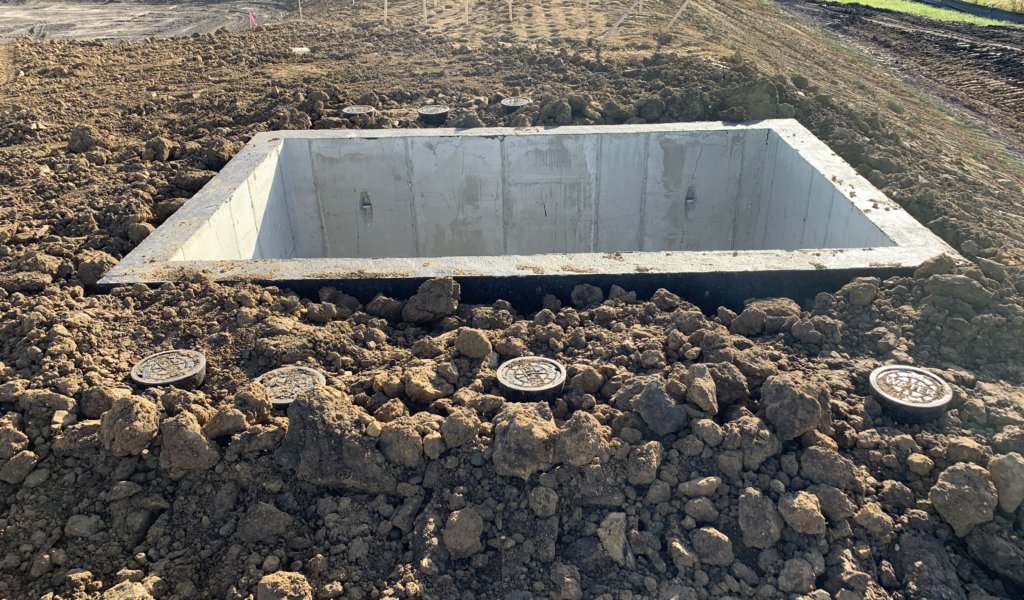
Loss of Contracted Wastewater Services Poses Serious Obstacle
When it comes to learning, the environment is everything. For the students at Starmont High School, that environment includes a lot of cornfields. Located in rural Iowa, nearly five miles from the nearest community, Starmont High School is between Strawberry Point, Arlington, and Lamont. It serves high school-aged students from all three communities.

Starmont High School is surrounded by cornfields, with its only neighbor being the dairy farm across the road.
Constructed in the late ’70s, a dairy farm directly across the road provided the school’s wastewater services. The dairy farm maintained its operational wastewater lagoon systems for its industrial waste. This arrangement worked well for nearly 43 years until the dairy farm experienced financial hardship, leading to the plant’s imminent closure.
With less than a year to act before their wastewater services were cut off, the high school needed options, and they needed them fast. Thanks to past client relationships and positive word-of-mouth recommendations, the team from Snyder & Associates was brought on board to find a viable wastewater solution for the high school.
Potential Wastewater Treatment Options Considered
During the initial design phase, our team considered and reviewed various wastewater disposal and treatment options. It was vital for the school’s long-term sustainability to find a solution that could fit within the school’s budget and be completed within the given time restriction.
Using trucks to haul the waste to a nearby treatment facility physically was briefly considered a temporary option if necessary. Ultimately, the goal was to avoid this situation since costs could quickly accumulate under this scenario. Next, our team looked into building force mains to pump wastewater to the closest municipal wastewater facility. The extensive and widespread construction and the numerous easements a project of this scope would require meant this option wasn’t feasible either.
Instead of moving the waste, our team began to review on-site alternatives. As the smallest option, a mechanical plant was considered but was eventually ruled out due to the excessive electricity demands it would require and the necessary operator training.
Controlling Their Own Fate and Wastewater Treatment
During our team’s discussions with the Starmont superintendent, it was clear he didn’t want to make the same mistake and place the school in a position where they were once again dependent on another organization for their wastewater treatment. At the recommendation of the Snyder & Associates team, the school board decided to take control of their future and build their own controlled discharge lagoon system.
“If you are a small enough system and have the room, a lagoon system is the best option. It self-disinfects, self-treats, and doesn’t require any power,” states Lindsay Beaman, PE, Business Unit Leader of Snyder & Associates’ Cedar Rapids office.
With the land already available as part of a Future Farmers of America (FFA) training field, design and construction for the lagoon system began immediately. In short order, three large pits for the lagoons were excavated, and a lift station was assembled for pumping wastewater between lagoons. With this simple solution, the school has ensured its wastewater needs will be met for decades.
Comprehensive Services Provide a Quick Solution
Thanks to the cooperation and quick action from the Iowa Department of Natural Resources (DNR) and the project’s contractor, all permitting and construction were completed before the loss of wastewater services from the dairy farm.
“Accomplishing as much as we did, as quickly as we did, was a major feat,” explains Beaman. “A project similar to this typically takes anywhere from four to five years, and we got it up and running just a year and one month from first being contacted.”




